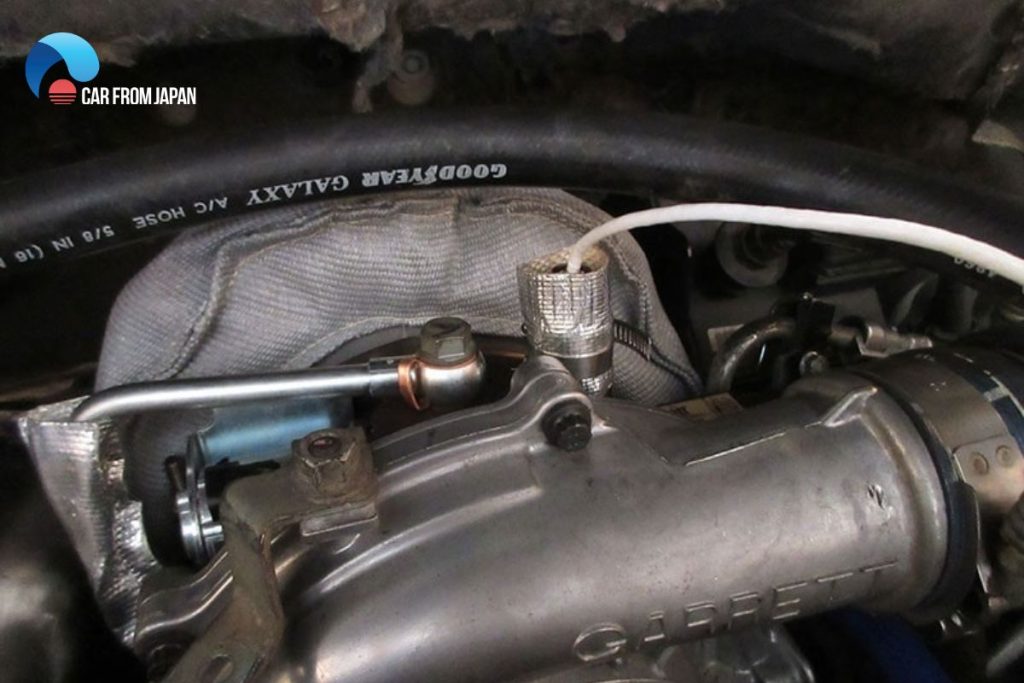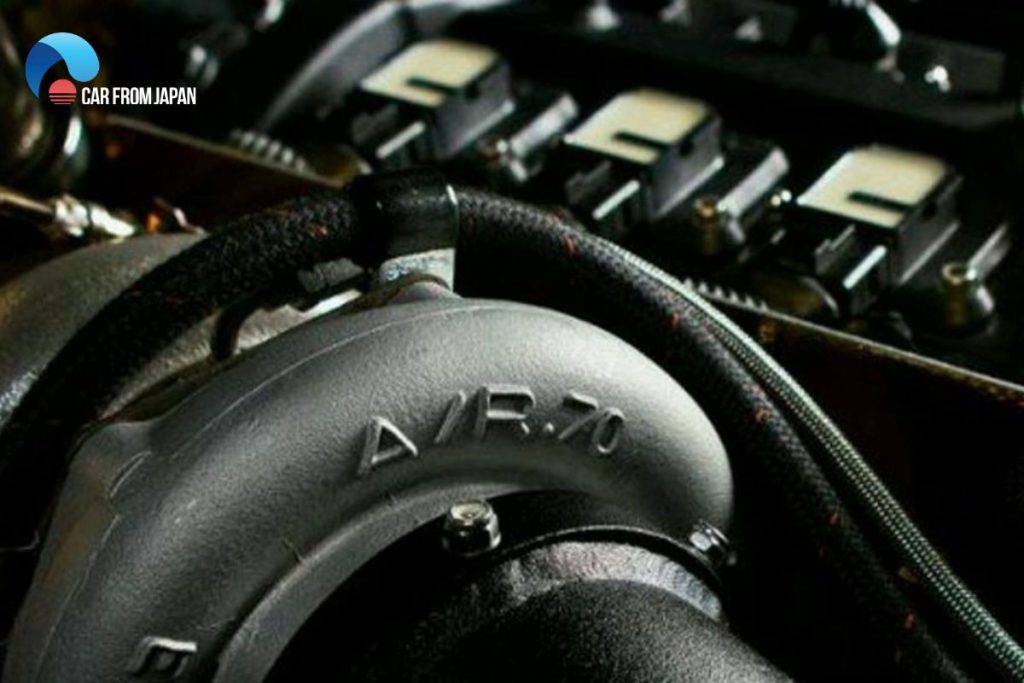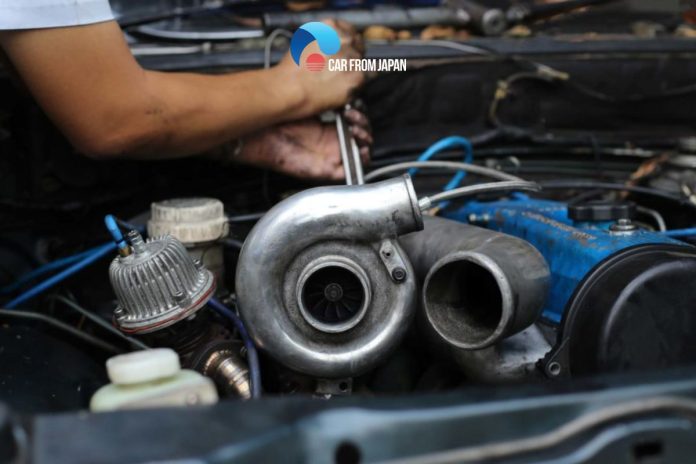Ever wonder how your turbo knows how to adjust itself for the best performance? The turbo vane sensor is one of the brains behind that operation. However, if this sensor malfunctions, it can lead to noticeable problems with your engine. Understanding the symptoms of bad turbo vane sensor is the first step in diagnosing the issue and keeping your car running well.
Contents
- Symptoms of Bad Turbo Vane Sensor
- Grumble sounds within the car exhaust
- False temperature gauge
- Sudden loss of engine power
- Giving off black smoke
- Fuel economy decreases fast
- The noticeable error codes: P2563 and P003A
- Not-in-sense vibration
- Overly loud and vibratory
- Faulty shaft vibration
- The turbocharger breaks down at high RPMs
- Disordered turbo boost pressure
- Car Care Tips To Avoid Symptoms of Bad Turbo Vane Sensor
- Limit movement right after starting the engine
- Do not turn off the engine immediately after stopping
- Avoid driving at too low RPM
- Pay attention when the car turns a corner
- Use gasoline with the correct octane rating
- Take note of the suitable lubricating oil
- Change the fuel filter on time
- Maintain the cooling system when charging periodically
- Occasionally, check the high-pressure gas pipeline system
- FAQs On Faulty Turbo Vane Sensor
- Wrapping Up On Symptoms of Bad Turbo Vane Sensor
Symptoms of Bad Turbo Vane Sensor
Overall, there are a lot of signs showing that your turbo vane sensor is at fault. From the visual to the sensing, you can easily notice the defective sensor in just a blink of an eye. In the guide below, we will discuss those symptoms, not in any particular order, to give you a general understanding of the problem.
Grumble sounds within the car exhaust
The first symptom indicating a problematic sensor is when you come to a sudden stop, then suddenly the engine’s exhaust gives off a rumbling sound. After a few seconds, it will return to its typical hissing sound. In this case, you may also witness a lot of smoke unintendedly coming from the exhaust.
False temperature gauge
Showing signs of a not-in-order turbo sensor, your car’s temperature gauge may also be wrong. The temperature gauge can display inaccurate warnings because the turbo vane sensor is not working. And the computer system can take responsibility for this issue.
Under typical circumstances, the car computer comes with a mission to adjust the temperature of the engine to stay within a specific range. However, when the turbocharger is operating all-out without being monitored by the sensor, the computer will not be able to maintain that temperature anymore, causing faulty and messy procedures on related components.
Sudden loss of engine power
Other symptoms of a bad turbo vane sensor are decreased acceleration and the sudden stop of the car engine power when you are on the road. This problem is generally caused by the electronic control unit, which blocks the turbo vane sensor to protect the engine effectively. It also causes some dangers and expensive consequences short.

Giving off black smoke
Working overtime while being overused sometimes, the turbo vanes may become stuck/clung because they are all covered in dirt or particles from the diesel plus carbon gasses of the engine or the environment. And not surprising when not only the turbo vanes but the turbo sensor failures are also usually the result of accumulated dirt and gunk, which can make the sensor less accurate.
Overall, if the turbo vanes and sensor get stuck in one of the positions as dirty obstacles, your drive may experience low power at the high or low end of RPMs. And for the last straw, the car will then emit a billow of black smoke from the exhaust, resulting in not-so-pleasant driving time and potentially ruining your whole fresh day.
Fuel economy decreases fast
For a car enduring a faulty turbo, especially the vane sensor, you can notice that its fuel economy may decrease drastically compared to the usual consumption within a short period.
In an electronic circuit assembly, various computed algorithms are used to determine a car’s overall performance, day-to-day efficiency, and fuel economy. If any algorithm turns out to be defective, the engine may be running on low or no-performance fuel instead of high-performance one as it should.
The noticeable error codes: P2563 and P003A
If you are trying to boost your engine’s RPMs above 1500 to 2300 RPMs, and your turbo vane sensor is not functioning properly then, you may encounter some problems. In addition, when your vehicle is inoperative while the engine is still on (being on idle), the turbo vanes will open and close every few seconds (about five seconds). In this case, you will notice the coming-on check engine light and P2563 & P003A error codes.
These codes indicate that the car powertrain control module assumes the disappeared standard calibration or other issues arising within the turbocharger or turbo vanes sensor, which can cause components of the whole car system to be affected in a not-so-good way. However, if you are using the V8 diesel Duramax engine, you need to check for the P003a Duramax trouble codes and their specified fixes as soon as possible.
Not-in-sense vibration
Turbochargers can cause vibrations when they are first equipped to a vehicle when accelerating, or during rapid driving. Over time, this can cause the wastegate to stop working or turn unresponsive, and eventually, the turbocharger and related details as the turbo vane, will stop operating altogether. And rooting back, a malfunctioning turbo vane sensor can often lead to this problem.
Overly loud and vibratory
If the turbocharger compresses the exhaust gases too much, this could lead to engine damage. In this particular situation, the turbine creates more pressure than is needed to compensate for the electrical losses in the compressor, resulting in a powerful engine sound like a double-turbo engine or ers device.
The excess exhaust pressure then overcomes the turbochargers, which in turn, recycle the exhaust gases, further pressurizing them. The pressure causes the exhaust system to rupture, releasing the gas into the atmosphere. Excessive exhaust gas volume causes the engine to overrev or run at a higher RPM than usual.
Faulty shaft vibration
A faulty turbo vibrating shaft can also cause the wastegate to be unresponsive. Connected to both the turbine rotors and the compressor, the shaft is responsible for transferring the engine’s vibrations to the rotor of the car alternator. The shaft may be defective or malfunction due to harsh and intense driving conditions such as braking friction, deep potholes, and crashed curbs.
The turbocharger breaks down at high RPMs
A noisy and rugged running engine is another one of the easiest-to-detect symptoms of a bad turbo vane sensor. With this kind of issue, you can see that the engine may run smoothly and sound light when idling for a minute before being in gear. But as soon as you start steering the wheel, the bad thing will, in one way or another, place increased stress on the car engine and push it to sound very rough.
Fortunately, you can fix the problem of a broken turbo with a high-quality suitable, and flexible vehicle silencer (or muffler). However, if you still struggle to reduce your engine noise, a good tip is to buy a shock absorber with an integrated duct purifier bracket.
Extreme turbulence flow
Turbo or turbo vane sensor problems can be caused by a lack of appropriate turbo insulation or a disconnected turbocharger. In either case, it can all lead to an engine blowby issue. The issue is the exhaust manifold and the turbo connecting strip.
Suppose the turbocharger begins to overpressurize the exhaust gases. If that’s the case, the rubber will cause the vibrations to travel in a bell-shaped pattern inside the engine, which then transfers those vibrations to the exhaust manifold. The exhaust gases move through the intake and exhaust manifold, picking up vibrations from there. This amplifies the beats generated by the engines or creates even more shock.
If there is too much engine vibration and harsh noise, the drivers may not be able to witness a frustrating problem. They can not even be aware that the turbo or turbo vane sensor is not functioning well if the engine is under-inflated. The oxygen sensors can also crash sometimes, leading to inaccurate problem readings and detections.
Disordered turbo boost pressure
If you experience a turbo vane sensor issue, you’ll know that your engine’s boost pressure is out of order. Running your car at full speed on the highway can cause the boost pressure to fluctuate between 5 and 20 PSI (pounds per square inch).
The above are some of the most visible defective sensor signs relating to vital parts of the turbocharger system. In any operation or inspection process, if you see any unusual problems and cannot immediately determine the name and cause, take your vehicle and turbo system to a professional repair shop.
Being consulted and advised by skilled mechanics will prevent the worst possible damage. Because, as small as they seem to be, these symptoms of a bad turbo vane sensor can have an unequal impact on the surrounding components and its entire system in the long run.
Car Care Tips To Avoid Symptoms of Bad Turbo Vane Sensor
It is inescapable for you to use and operate a vehicle with parts that fail over time. Not only that, but what we are talking about here is a turbocharger with a mission of putting more air into the combustion chamber.
If necessary, this motor type may consume a large amount of energy. And most likely, the components involved will have to work at high capacity even though it is defaulted to perform these tasks.
Because it is impossible to prevent the risks of damage due to time and sloppy use cycles when you do not have much time to pay attention, learning more about effective ways to use and care for turbocharged engines is reasonable and necessary. With that said, here are some helpful engine care and maintenance tips for the sake of your healthy turbo vane sensor.
Limit movement right after starting the engine

Modern car engines use electronic fuel injection systems, so there is no need to let the car sit for too long before moving. However, if you use a turbocharged engine car, many experts suggest that the vehicle be idled for a few minutes before rolling.
The reason is that the turbocharger uses the same lubricating oil as the engine. When the car starts, the engine oil is still cold (denser), so it circulates more slowly. And the oil also needs time to pump up. Therefore, the engine and turbo lubrication effects are not optimal.
The ideal temperature for the oil to circulate to lubricate the car parts is from 80 to 95 degrees Celsius. The time to wait for the oil temperature to rise will depend on the different engine heating mechanisms in each type of vehicle. It is usually recommended to let the car engine start for 2-3 minutes before moving.
Do not turn off the engine immediately after stopping
With a vehicle using a naturally aspirated engine, turning off the engine immediately after stopping does not have too affected. However, with ones using turbocharged engines, this act should be limited. Because with this engine type, the heat generated will be very high.
Moreover, under the car’s hood, the oil acts as both a lubricant and a coolant, so it will absorb heat from the engine. If the engine is turned off suddenly while it is still hot, the oil will not be circulated but will only be locally exposed in some high-temperature locations.
This act will cause the oil to degrade in quality and the additives in the oil to decompose faster. So when riding a turbo, the driver should pay attention to slow down a few kilometers before the destination. After stopping, let the car start for 2-3 minutes, then turn off the engine.
Avoid driving at too low RPM
Within a complex system, the engine exhaust will be that one component that drives and monitors the turbocharger. If the engine operates at too low a round per minute, the turbo will not reach a certain rev threshold. This means that the vehicle’s performance power will not be able to reach the optimal level. Therefore, driving at too low RRM makes some drivers misperceive that it will save fuel, but it may end up consuming more.
Pay attention when the car turns a corner
Unlike naturally aspirated engines, turbocharged engines will have several delays when accelerating. Therefore, if not paying attention enough to this delay, turbo riders are prone to understeer or oversteer when cornering, resulting in the car slipping, losing grip, or even going out of control. So, an ultimate worthy notice when riding a turbo is not to step on the accelerator too deeply when driving out of a corner.
Use gasoline with the correct octane rating
There is always the vehicle owner’s manual, and the manufacturer often has a full recommendation on the appropriate octane gasoline for that type of vehicle. Every driver should adhere to this advice and remember to avoid gasoline with an under-standard octane rating. Because it can cause the car to detonate fuel at the wrong time, affecting the overall service life of the engine and turbocharger in particular.
Take note of the suitable lubricating oil
Overall, the turbochargers use the same lubricating oil as the engine. In some turbocharged vehicles, there is no significant loss of oil during a change cycle. But in some other automobiles, the oil loss amount is typically higher than usual, so you should keep an eye on the issue and occasionally replenish lubricating oil. Therefore, users should consult the car company for instructions on some proper ways to check and add oil.
Change the fuel filter on time
The turbocharger rotates with the exhaust from the engine and is, therefore, very sensitive to the exhaust quality. If the fuel filter is dirty, contaminated gasoline will enter the combustion chamber, resulting in the faulty ratio of the mixture between the fuel and compressed air. And in just a short period, it will affect the exhaust gas quality and directly harm the turbo. Therefore, it is always necessary for a car owner like you to inspect carefully and change the car’s fuel filter periodically.
Maintain the cooling system when charging periodically
In general, you should service the turbocharged intake air cooling system every 160,000 km or sooner, depending on operating conditions. Besides, you should also check the cooling system and change the cooling water regularly.
Occasionally, check the high-pressure gas pipeline system
In many cases, the turbocharger sensor fails due to a malfunction in the high-pressure gas pipeline, affecting the air intake system. At this point, the turbo has to work harder to compensate for that air loss. Therefore, it is a vital maintenance step to check the high-pressure gas pipeline system throughout sometimes to prepare for the worst and find a way to handle any leaking issue that may occur.
FAQs On Faulty Turbo Vane Sensor
Way to test the turbo vane sensor
The sensor will be securely attached to the engine or body. To get accurate results, you should open the scan tool and select the turbo vane sensor option. Then start your car and slowly release the vane sensor plunger. Finally, make sure the voltage goes from about 0.2-0.3 to 4.8 volts, and the percentage goes from 0 to a full 100.
What is the mission of the turbo vane position sensor?
In more detail, the turbo vane position sensors ensure that your vehicle’s engine control module or control unit can correctly regulate the variable geometry turbo vanes on your turbocharged engine. The sensor calculates the air density and fuel delivery required for optimal combustion. If the turbine blade position sensor fails, the system will not be able to add fuel under boost, resulting in power loss and possibly severe engine damage.
Where is the turbo vane sensor within a system?
There is a turbo vane position sensor from the center of the turbocharger to the driver side of the turbo fuel supply line. This three-wire sensor is perfect for monitoring temperatures and humidity levels. The sensor-given analog voltage signal is also valuable because it gives you an accurate representation of the environment.
Wrapping Up On Symptoms of Bad Turbo Vane Sensor
While we can figure out and discuss dozens of symptoms of a bad turbo vane sensor and turbo engine, there is no such thing called a full fix for that lousy system. Overall, turbochargers can suffer from a weak turbo vane sensor, which can repeatedly cause excessive blowby and pressure.
So testing your sensor before spending hundreds or even thousands on unguided repairs is very worth considering to ensure that you are getting the best possible results on the day you welcome your car back, completely healthy.
Notice every detail when your sensor operates faulty. More shaking or noise may show up when you drive, and better fuel efficiency may be on the line, too. All around, the durability of a turbo sensor will largely depend on how it is operated and maintained.
Therefore, you should note and always keep in mind a few things to prolong the life of the turbo engine. If the symptoms are severe to the point you can feel them in just seconds or within a sense, you should take your vehicle to the automotive service advisor for a timely check-up and repair.
For more car maintenance tips, follow Car From Japan today.



